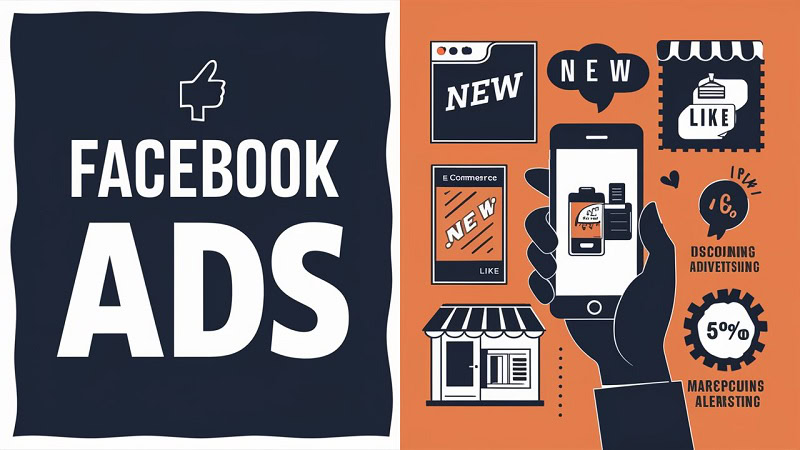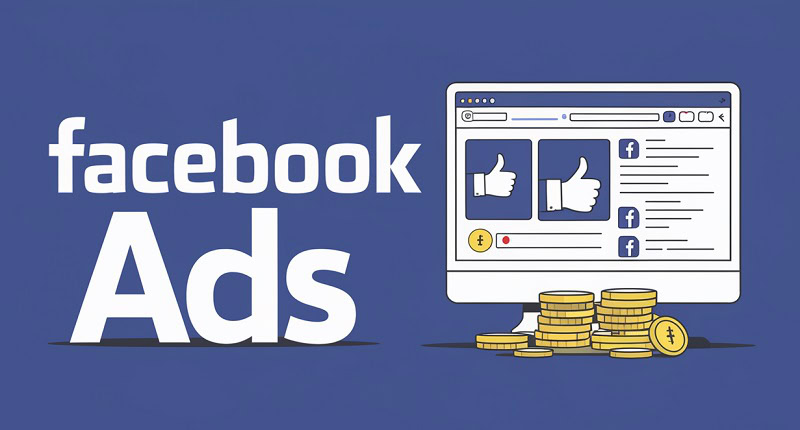
About author: Jack Evans brings his extensive experience in digital marketing to the table, specialising in paid social strategies that drive growth for e-commerce and DTC brands.
If you’re an ambitious e-commerce business looking to drive growth, advertising through Google Ads is a very good idea.
The Google Ads platform is enormous, offering a huge number of advantages and commercial opportunities to digital marketers.
Users are four times more likely to click ads on Google versus other advertising networks, and the platform is used by millions of businesses around the world.

Boost E-Commerce ROI: Download Our Free CPA & ROAS Calculator
Google Ads provides brands with colossal scale, advanced targeting and diverse formats.
What’s not to like?
But there’s one important question to answer before you launch your own Google campaign.
How much does Google Ads cost?
Knowing the potential cost of Google advertising is vital for success, allowing you to manage your marketing budget more effectively.
If you understand the factors that can influence the price of your Google ads, you can use this knowledge to generate more conversions at a lower cost. Sounds like a winner, eh?
Let’s take a look at the costs of Google Ads, and examine how these costs are calculated.
As a specialist Google ads agency we can help you with your campaigns just get in touch for a free consultation.
What are Google Ads?
Google is primarily known as a search engine, but ad placements can appear in a variety of locations across the platform.
There are several types of campaigns available to advertisers, including:
- Google Search – ads placed around Google search results
- Google Display – ads delivered across the Google Display Network
- Google Video – ads delivered on the YouTube platform
- Google Shopping – shoppable ads delivered across the Google platform
One of Google’s biggest strengths as an advertising platform is its wide range of ad formats – brands can achieve many different objectives by utilising different placements.
Google Ads also offers highly advanced targeting capabilities.
Advertisers can reach targeted audience segments based on browsing behaviours, shopping habits, and specific demographic information. This allows e-commerce businesses to identify and convert valuable prospects at scale.
Are Google Ads worth the investment?
Advertising on Google provides brands with a plethora of opportunities to attract customers, deliver conversions and drive long term revenue.
So what makes Google Ads so effective? And why are these ads worth the investment?
Enormous audience reach
The sheer scale of the Google Ads platform is a major benefit for online marketers.
The Google search engine is estimated to process around 2 trillion user queries per year.
Every single one of these searches provides advertisers with an opportunity to showcase their brand and deliver sales to a relevant audience.
Plus, all of this data is used by the platform to enhance its targeting capabilities. Brands can reach specific users based on their search behaviours, which often leads to highly profitable campaigns.
Versatile targeting opportunities
Google advertising is designed to reach consumers at every stage of the user journey through a range of different placements.
This means that e-commerce businesses can run highly effective marketing strategies, moving prospects through the funnel and driving consistent volumes of conversions.
For example, let’s say that you’re a relatively new online business.
A primary focus for your brand is probably building brand awareness and familiarising customers with your offering. By using Google display and YouTube placements, you can deliver more detailed information about your brand and showcase your products effectively.
However, Google Ads allows you to convert this brand awareness into actual sales.
By using more sales-led Google Search ads (i.e. bidding on specific brand keywords) and retargeting strategies, you can push prospects through the funnel and increase revenue.
Proven performance for advertisers
Google Ads is also one of the most tried & tested platforms for e-commerce advertisers.
These placements have been proven to deliver consistent results for businesses of all sizes against a wide range of objectives.
On average, Google delivers an 8:1 ROI for digital advertisers, enabling e-commerce businesses to run incredibly efficient campaigns.
Plus, Google is constantly evolving and improving its advertising offering, meaning brands can continue to optimise their ads to drive superior results.
How does Google Ads work?
Google Ads is an incredibly powerful tool for e-commerce advertisers.
But how does the platform work?
The first thing to wrap your head around is the Google Ads bidding system, which operates on a PPC (Pay Per Click) model.
Marketers target and bid for specific keywords and audiences through the Google Ads platform, competing with other online advertisers to deliver impressions.
Developing a bidding strategy that delivers results cost-efficiently is crucial to success with Google advertising.
Advertisers can set maximum bids for each individual auction, or a maximum daily budget that won’t be exceeded by the platform.
There are three primary bidding strategies available through Google Ads:
1. Cost Per Click (CPC) – paying when someone clicks on your ads.
2. Cost Per Mille (CPM) – paying for every 1,000 ad impressions.
3. Cost Per Engagement CPC) – paying for specific user actions.
The right strategy for your business all depends on your specific objectives and budget.
However, your bid amount isn’t the only factor to consider when running Google Ads.
Google also uses a metric called ‘Quality Score’ to determine the success of your ad in the auction.
The Quality Score is calculated based on three elements:
- Expected click-through rate (CTR) – the likelihood of a user clicking your ad.
- Ad relevance – how relevant your ad is, based on user search intent and behaviour.
- Landing page experience – the quality and relevance of your landing page.
Your Quality Score, combined with your bid amount, creates your Ad Rank – this ultimately determines your success in the ad auction.
However, your Quality Score is just one factor that can influence the cost of your Google PPC campaigns.
What factors impact Google Ads costs?
Google Ads costs can frequently fluctuate due to a range of different factors.
Once you understand these factors and the impact they have on your costs, you can manage your marketing spend more effectively.
Factor #1 – your industry
Your industry plays a huge role in determining your Google Ads costs.
Although you can’t change your industry, it’s still important to know what kind of costs to expect so that you can budget and prioritise spend accordingly.
Certain industries can pay an eye-watering CPC for search activity, due to the nature of their businesses – for example, finance (£2.68) and legal (£5.26).
Fortunately, e-commerce businesses tend to pay a slightly cheaper maximum CPC, usually around £0.90.
Factor #2 – keyword selection
The keywords you bid against have a significant impact on your total campaign costs.
However, constructing an effective keyword strategy is a bit of a balancing act.
Businesses need to bid on relevant and popular keywords that will drive clicks, but these high-traffic keywords are often highly competitive and more expensive.
To run a successful keyword strategy, advertisers can utilise online keyword research tools that can identify the most efficient search terms to bid against.
Keeping a close eye on performance is also crucial. You need to check the costs of your current bids, monitor the conversions (and value) that keywords are driving, and test new search terms throughout a campaign.
Factor #3 – current trends
The world of digital marketing is constantly shifting and evolving, and Google Ads is no different.
It’s very important to keep up with the latest trends, both within your specific industry and the wider consumer marketplace.
Everything from major economic news to viral product trends can impact your Google advertising costs, so make sure that you’re tuned in to the market.
There may be fresh opportunities to increase your online store conversions or red flags that require a rapid change of strategy.
Factor #4 – customer lifecycle
Every single industry has a unique customer journey that needs to be acknowledged by e-commerce advertisers.
Businesses selling big-ticket items (e.g. expensive technology products, automotives) will generate more revenue with each sale, but they’ll need to spend more budget on nurturing and converting customers.
A big-ticket purchase is a large commitment, so these brands will need to invest in Google Ads throughout the funnel and over an extended period to drive an eventual sale.
On the other hand, frequent and inexpensive purchases (e.g. attire, accessories) will generate less revenue with each sale but can be driven more cheaply and frequently.
The average CPC or CPA for your brand will vary hugely depending on your customer lifecycle.
Factor #5 – account management and optimisation
Google marketing can be incredibly profitable for e-commerce advertisers, but ads still require careful management to deliver optimal results.
A big factor in determining the total price of your campaign is how effectively you run and optimise it.
Advertisers need to closely monitor ad spend and performance to spend their budget effectively and maximise returns. Proper campaign management includes:
- Maintaining an organised Google Ads account structure
- Monitoring and optimising keyword lists
- Generating regular campaign reports
Factor #6 – dayparting
By only running Google advertising at specific times, certain businesses can prevent wasted budgets and maximise the impact of their spending.
For example, a local shop might only run Google activity during opening hours or maintain a lower spend when the store is closed.
If the store isn’t physically open for customers, why spend excess budget competing with other advertisers online?
Although this won’t apply to every business, it can be a smart and speedy way to reduce Google Ads costs.
Factor #6 – geotargeting
Geotargeting (or location targeting) is another smart tactic that can reduce Google advertising costs for certain businesses.
If you’re a physical store looking to drive foot traffic, geotargeting can help you to reach more relevant audiences who are able to visit your shop.
However, geotargeting can also be used to advertise different products and services in specific locations.
For example, if certain products are more popular (or only available) in a particular location, or if you’re looking to increase sales of an individual item.
Factor #7 – device targeting
Running cost-efficient Google Ads campaigns often comes down to making small, but impactful, optimisations.
Device targeting can be a very effective tactic for reducing campaign costs and improving results.
Let’s say that you’ve noticed a clear trend in your reporting.
Mobile users are clicking and converting more frequently than desktop users, and iOS users are even more likely to purchase Android users.
By redirecting your budget to prioritise iOS users, then mobile users, then desktop users, you may be able to deliver increased conversions more efficiently.
Factor #8 – Quality Score
When running Google Ads campaigns, your Quality Score will have a big impact on your total costs.
Google rewards advertisers who are running high-quality and relevant campaigns.
Although there are some nuances to the auction, as a general rule of thumb, the better your Quality Score the less you’ll pay for a successful bid.
If your campaign is clearly resonating with your target audience, you may even be able to outperform competitors who are bidding a higher amount.
To increase your Quality Score, you’ll need to focus on three key elements:
- Expected click through rate (CTR) – the likelihood of a user clicking your ad.
- Ad relevance – how relevant your ad is, based on user search intent and behaviour.
- Landing page experience – the quality and relevance of your landing pages.
Factor #9 – Ad Rank
After calculating your Quality Score, Google will assign your advert an ‘Ad Rank’.
This Ad Rank determines if and where your ad will be placed.
Your Ad Rank is calculated by multiplying your Quality Score by your maximum bid, aiming to take into account both the quality of your ads and your budget.
To consistently deliver optimal results, advertisers need to balance campaign relevance with a competitive bidding strategy.
By running relevant ads that drive high click volumes to a well-designed landing page, advertisers can quickly improve their Ad Rank and reduce campaign costs.
The cost of a Google Ads campaign will frequently fluctuate over time.
Not all of these factors will necessarily come into play at the same time, but they can all influence the total cost that you pay for Google advertising.
By monitoring and managing all of these individual factors, you can reduce your advertising costs while also improving your returns.
Budgeting for Google Ads
Google Ads is capable of delivering highly profitable campaigns, but if advertisers don’t understand how to budget correctly, they can find themselves rapidly running out of cash.
Luckily, budgeting for Google Ads isn’t rocket science, and there are just a few concepts to understand. Firstly, let’s look at some of the most common key terms:
- Budget – the total amount you’re willing to spend on a campaign
- Bid – the maximum amount you’re willing to pay for a single click
- Cost – the amount you pay for a successful auction bid (i.e. a click)
Another fundamental concept to grasp is your daily average budget.
When you set up a campaign, you’ll need to confirm a daily Google Ads budget.
This is a rough estimate of how much you’re willing to spend on a daily basis.
Depending on performance, Google may spend slightly more or slightly less than this total budget, but never more than 2x your daily limit.
(Google will also never exceed your monthly spending limit. In other words, your daily budget multiplied by 30.4.)
Keeping a close eye on your daily spend will allow you to budget more effectively. You’ll quickly be able to determine how much money is required for a successful bid, which will then help you to set a healthy daily and monthly budget.
What are some typical costs for Google Ads?
This is a very good question, but unsurprisingly, the answer isn’t completely straightforward.
Typical costs for Google advertising will vary significantly depending on your industry, your target audience, and other external factors.
There are too many variables that can influence Google prices (e.g. keywords, seasonality, competitor activity) to set a clear and reliable ‘average’ cost.
However, there are some benchmarks that you can reference as a rough guide.
For the Google Search network, the average Cost Per Click for all industries usually falls between £0.80 and £1.60.
For the Google Display network, the average Cost Per Click for all industries usually falls below £0.80.
It’s important to remember that these average costs can fluctuate wildly depending on your industry and keyword strategy.
Beyond this, you’ll just need to set your own campaign benchmarks over time and aim to improve your campaign performance.
How to optimise Google Ads for ROI
The key to optimising your Google activity for a strong ROI is tracking.
Without proper tracking in place (i.e. the ability to measure the true value of your conversions) it’s almost impossible to calculate an accurate ROI.
Your first priority before launching a new campaign should be to set up thorough conversion tracking on your website.
Once you’re able to track the value of a conversion for your business, as well as the source of the conversion (e.g. a specific audience, format, keyword, etc) you can shift your budget to focus on the most profitable tactics.
This allows you to make impactful optimisations to ensure that your returns are significantly outweighing your investment.
How do I manage my Google budget effectively?
Basic due diligence can go a long way when you’re looking to manage your Google advertising budget.
Check your campaign reports
Keeping tabs on campaign reports is critical when you’re running a Google Ads campaign.
Diligent reporting enables you to optimise your ads, shift your budgets and focus on your most profitable placements.
Regularly monitoring reports is also key to tracking your budgets. You may need to manually adjust your daily spend limits or tweak pacing to maintain an effective ad spend.
Refine your keyword strategy
Your keyword strategy is one of the most important elements of your Google activity.
To maximise your returns, you need to invest in the right keywords.
That means focusing budget on the keywords that are delivering quality traffic and valuable conversions at a cost-efficient price.
Improve your Quality Score
Succeeding in a Google auction isn’t all about your bid amount. The quality of your advertising is also extremely important.
If you’re struggling to maintain a positive Quality Score, you may need to go back to the drawing board and reassess your campaign approach.
Ensure that you’re running professional creative assets that are being targeted toward a relevant audience. Plus, take time to improve and optimise your website landing page – that means a clean design, easy navigation, and quick loading times.
How can I reduce my Google Ads cost?
Now that you know how to manage your Google advertising budget, let’s take a look at some expert strategies that can help you to reduce your costs.
Utilise negative keywords
Focusing your budget on profitable keywords is key to driving cost-efficiency, but using and excluding negative keywords is also very important.
Negative keywords are excluded from your Google campaigns, meaning they won’t be targeted or bid against.
These keywords may be terms that seem relevant to your business on the surface but aren’t actually closely related to your offering. They could also be keywords that are proving to be highly inefficient or expensive.
Make sure to regularly analyse and refine your keyword lists to identify negative keywords!
Make the most of geo-targeting
Geo-targeting can be highly beneficial for businesses looking to reduce Google costs.
If you’re running a store with a physical location, you can use geo-targeting to exclusively reach customers who are likely to visit.
This helps you to make the most of your marketing budget.
However, you can also use geo-targeting to advertise different products and services in different areas. You may need to sell more stock in a certain location, or specific services may be limited to a certain location – geo-targeting can help you to invest more efficiently.
Use tactical ad scheduling
Not every Google Ads campaign needs to run 24/7.
Ad scheduling can often help e-commerce businesses to reduce inefficient spend by focusing their budget on key hours.
Perhaps you’re only interested in advertising during your store opening hours, or maybe customers are more likely to engage at a certain time in the day.
Keep an eye on your Google reports to identify these trends, and adjust your scheduling accordingly to make your budget work harder.
Getting started with Google Ads
So, you’re now equipped with all the knowledge you need to manage your Google Ads budget effectively.
Let’s take a look at how you can get started with your first campaign.
1. Create an account on the Google Ads website. Select ‘Create Your First Campaign’.
2. Choose your desired campaign type. If you’re just getting started with Google Ads, let’s start with a simple paid search campaign by selecting ‘Search Network Only’.
3. Confirm your preferred location. You can select an entire country if you’re looking for national scale, or deliver ads to a specific location if you’re a local business.
4. Confirm your budget and payment options. Starting with a relatively low, affordable daily budget is a sensible idea if you’re new to the platform. You can always ramp up spending once you’ve gathered some learnings!
5. Set up ad groups and choose your keywords. If you need some assistance, you can utilise the Google Keyword Planner or another online keyword research tool.
6. Create your Google ad copy. Keep it short and sweet by focusing on your most compelling product points and adding a crystal clear CTA.
Once you’ve completed the above steps, you’ll be ready to get started.
The price of your Google Ads campaigns will naturally fluctuate over time – but that doesn’t mean you can’t effectively manage your budget and reduce your costs.
Stick to a regular reporting schedule, stay aware of the factors that can impact your costs, and make consistent optimisations. If you can follow these steps, you’ll be running highly efficient Google campaigns before you know it.







